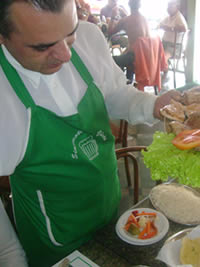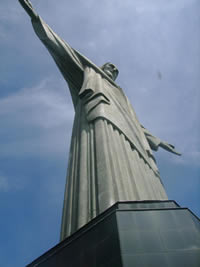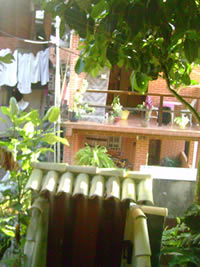Rio de Janeiro ("River of January") is the second major city of Brazil, behind São Paulo. The city is capital of the state of Rio de Janeiro. The city was once the capital of Brazil (1763–1960) and of the Portuguese Empire (1808–1821).
Commonly known as just Rio, the city is also nicknamed A Cidade Maravilhosa - "The Marvelous City". Rio de Janeiro is one of the most spectacular cities on the planet.
It is famous for its spectacular natural setting, its Carnaval celebrations, samba and other music, hotel-lined tourist beaches, such as Copacabana and Ipanema, paved with decorated black and cream swirl pattern mosaics.
Some of the most famous local landmarks in addition to the beaches include the giant statue of Jesus, known as Christ the Redeemer atop Corcovado mountain, which has recently been named one of the New Seven Wonders of the World; Sugarloaf mountain with its cable car; the Sambódromo, a giant permanent parade stand used during Carnival; and Maracanã stadium, one of the world's largest football stadiums
With around six million inhabitants, one of Rio's most precious resources is often overlooked: its people. Brazil is a melting pot of races, colors and creeds. There is no single dominate race, religion or culture in Brazil. There is room for all, including the many visitors who come to Brazil each year.
Rio de Janeiro is among the biggest cities in South America, but the city is more widely renowned for the various cultural celebrations that are held there every year. The most popular of these is the Carnaval, held two weeks before the traditional Christian fasting of Lent.
People from all over Brazil and from all parts of the world come to Rio to take part and witness the extravaganza. The Carnaval brings a lot of people, good food, color and of course the Samba dance. The celebration of Carnaval ends on "Mardi Gras" Tuesday. Apart from the Carnaval, New Year is also a big deal in Rio and is also one of the other major festivals. It's celebrated with several concerts and firework displays all around Rio, the largest one being in Copacabana beach.
Rio also has one of the world's most talked-about nightlife. Rio has a lot of nightclubs where the affluent enjoy themselves and party the night away.
There are enormous disparities between wealthy and poor in Rio de Janeiro. Although the city clearly ranks among the world's major metropolises, a significant proportion of the city's inhabitants live in poverty. The worst of the areas are the slums and shanty towns known as 'favelas'; often crowded onto the hillsides, where sturdy buildings are difficult to build and accidents from heavy rainfall are frequent.
A unique aspect of Rio's favelas is their close proximity to the city's wealthiest districts. Upper-class neighborhoods such as Ipanema and Copacabana are squeezed in between the beach and the hills, the latter of which are covered with poor neighborhoods.
(Courtesy of Wikipedia)




